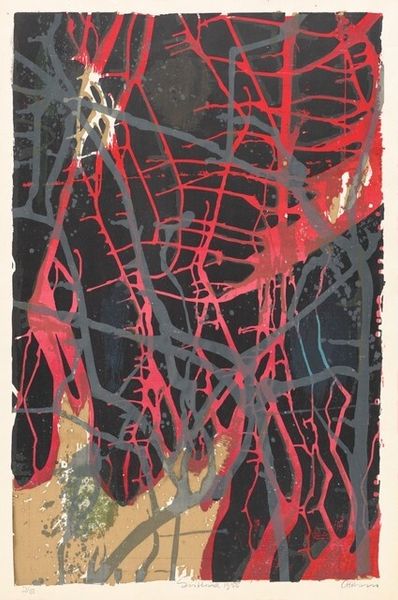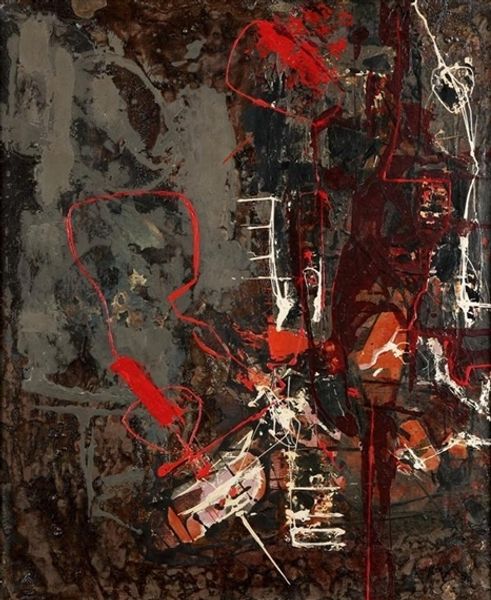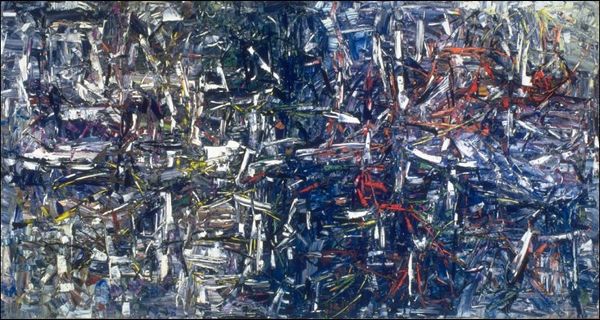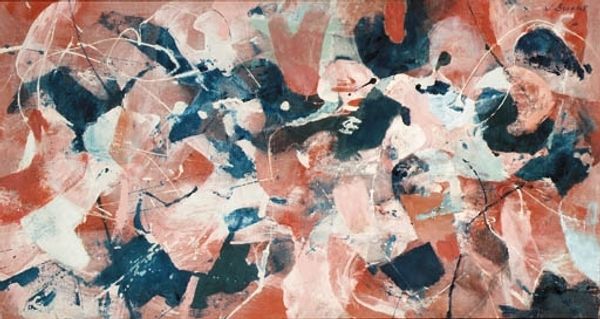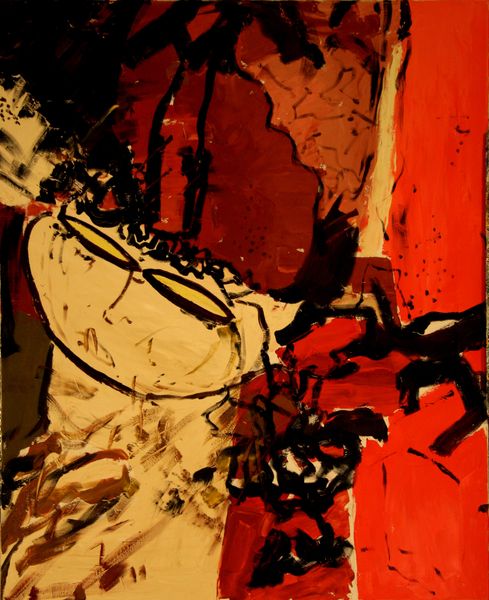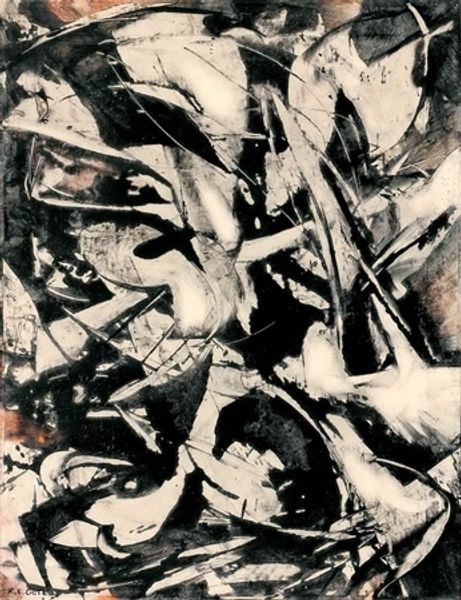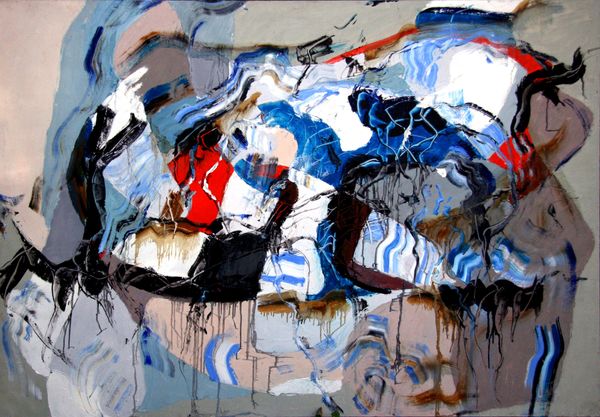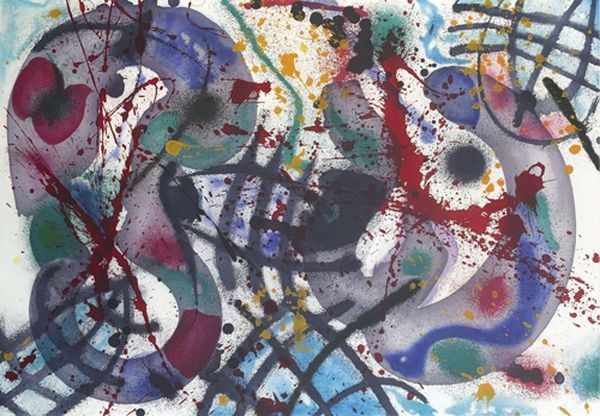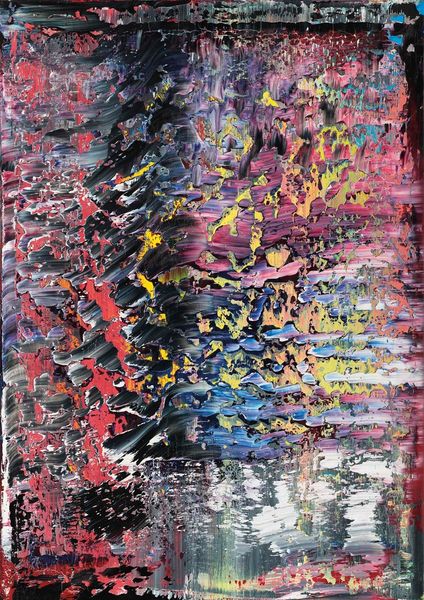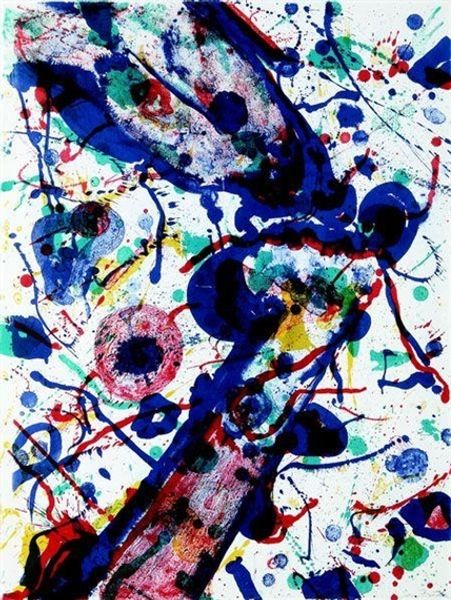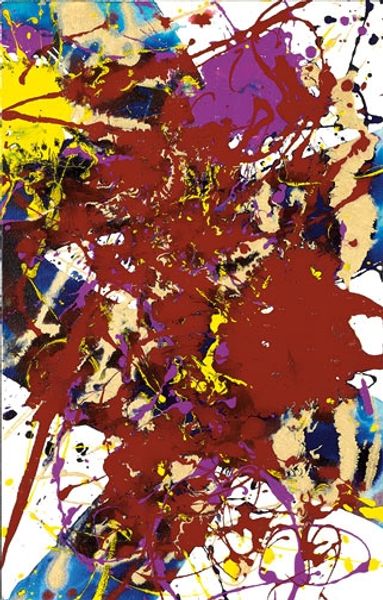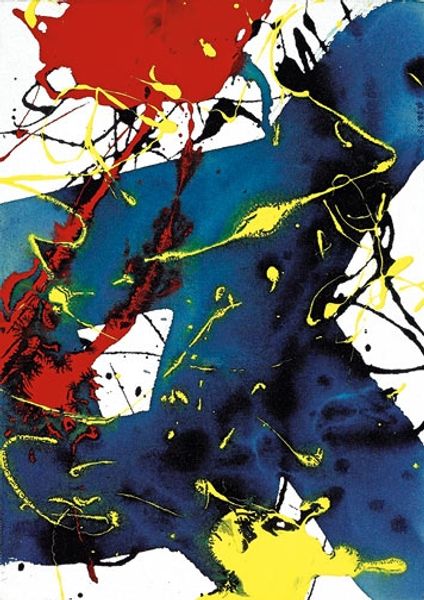
Copyright: Jean Dubuffet,Fair Use
Editor: This is Jean Dubuffet's "Episode," painted in 1984 using acrylics. It feels really chaotic, almost violent with all those clashing lines. What do you see in this piece, especially in terms of its historical or social context? Curator: The chaotic nature you observe aligns perfectly with Dubuffet's broader artistic project. He consciously rejected traditional aesthetic values. We can see it as a rebellion against the dominant artistic institutions of his time. "Episode" reflects his engagement with Art Brut, which championed the raw, untutored expression found in the work of psychiatric patients and children, pushing back against the art world establishment that historically marginalized such voices. Why do you think he gravitated toward that? Editor: That’s interesting. I guess he wanted to dismantle the established hierarchies within the art world and disrupt conventional notions of beauty. So, by embracing Art Brut, he challenged what society considered "real" art? Curator: Precisely! Think of it as a kind of socio-political critique. He saw conventional art as being corrupted by bourgeois values, a view shared by many during the mid to late 20th Century. How do you see this work engaging with that sentiment now? Editor: I hadn’t considered the politics of the line itself before! Looking at "Episode" now, I see less chaos and more intentionality behind Dubuffet’s style. Curator: Understanding the cultural and institutional context really shifts our interpretation, doesn’t it? Now we can appreciate it less as mere aesthetic chaos and more as a defiant act of artistic liberation. Editor: Definitely! I’ll remember to always think about the wider influences that impacted an artist's approach to art-making and consumption. Curator: That is always key. It changes how you experience the work itself.
Comments
No comments
Be the first to comment and join the conversation on the ultimate creative platform.
